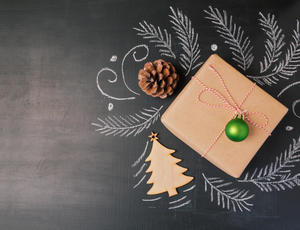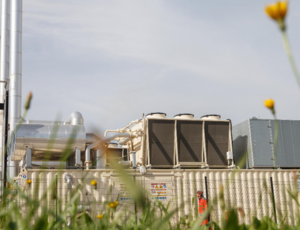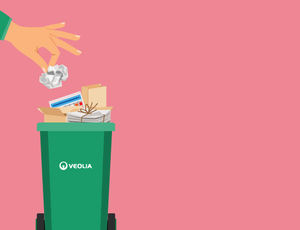While Christmas can be the most wonderful time of the year for many, it is also the most wasteful time of year with a 30% increase in waste from kerbside bins according to the CSIRO and around six million Australians getting a gift they will never use (candles, socks, pampering gifts are leaders here).
But Veolia is here to let you know it doesn’t have to be this way.
“With a little bit of forethought, some cunning Christmas tips, and with our waste industry insider’s knowledge, we can help you make it the least wasteful festive season for you and your family,” said Veolia ANZ Chief Operating Officer - Resource Recovery Craig Barker.
“This simple guide will help every household understand which bin is right for your rubbish, especially if you want to see more waste recycled and help divert it from landfill. Here in a nutshell, is everything you need to know to make this the least wasteful festive season ever.”
The Veolia Guide to 12 ways of binning Christmas waste the right way
Christmas paper
It’s great if you can reuse wrapping paper next year but if tiny hands get all excited and tear their way to the gift, making the wrapping irrecoverable then this is where it needs to go. Wrapping paper made from 100% paper can go in your yellow lid bin. If the wrapping paper is easy to tear then it’s probably paper.
In contrast, metallic wrapping paper and paper with glitter or foil can’t be recycled, that has to go in the red bin and on to landfill.
But here’s a tip for those that love glitter and the environment equally, it is possible to make your own completely biodegradable “edible” glitter. Check out this CSIRO recipe for edible glitter.
Christmas trees
Small natural Christmas trees can be broken up into small parts and put in the green bin with garden clippings. Bigger trees can be placed beside the green bin. Many councils now run Christmas tree pick-ups towards the end of the festive season for larger trees, so keep an eye out for those. The great thing is this year’s natural trees will be turned into mulch and compost that can be used for next year’s Christmas tree crop.
Plastic Christmas trees are another story. It’s impossible to recycle these so they generally go in the red bin or get added to a bulk pick-up and sent to landfill.
Christmas decorations
In general Christmas decorations come in so many different shapes, sizes and compositions that most can’t be recycled. It’s the red bin and landfill for them. Tinsel is particularly challenging. It definitely should not go in the recycle bin as it wraps around conveyor belts and other machinery involved in the resource recovery process for recyclables. Re-use tinsel where you can or find a sustainable alternative.
Fairy lights, LEDs and electronics are no good for your bins either but there is opportunity to recycle them. Send Christmas tree lights and small electronics to your local e-waste recycling station instead, or include them in a booked doorstop recycling collection. If dropped off in the correct location, up to 95% of raw materials can be recovered and reused. Dump them in the wrong location and it’s back to landfill.
Batteries
Do not place a battery in any household bin, they are a fire hazard in bins, trucks, and landfill if disposed of incorrectly. Drop these off at special battery recycling locations. You can find a battery recycling location in your area by searching the B-cycle battery recycling website.
Phone upgrades
So, you got a new phone for Christmas ― those food selfies don’t take themselves. If you are lucky enough to have upgraded to a new phone or piece of tech, don’t dump the old model in a kerbside bin, especially as there might be some profit in it for you. There is value in old phones and tech. Be sure to research trade-in-options so you can receive money for your devices before they are reused or recycled. Reusing is always better than recycling. If not, drop them off at your local e-waste spot.
Packaging
It’s not unusual to receive presents encased in styrofoam or polystyrene. These cannot be recycled. Red bin only.
But If your Christmas present or any product comes encased in moulded plastic that retains its shape ― such as the plastic packaging used to hold strawberries ― this can be placed in the yellow bin. Yep, it’s recyclable.
Plastic cups, glasses, plates and cutlery
Rigid plastic and 3D plastic can be recycled as long as they have volume. Plastic cups can be recycled but flat items like plates and smaller items like cutlery can’t, so they go in the red bin.
Plastic Shopping Bags
The festive season is peak time for soft plastic bags going into recycle bins when they should go in the red bin only. Definitely don’t put recycled items in plastic bags before putting them in the yellow bin, as this is almost impossible to sort and will likely see your perfectly good recyclables going to landfill. Better still, avoid plastic bags where you can, because every time you buy a present or food and put it in a plastic bag, that’s another piece of plastic destined for landfill.
Broken glassware and crockery
Something always gets broken at Christmas, and we’re not just talking about relationships with the inlaws. Broken glassware and crockery are common casualties but they have to go in the red bin because they don’t melt at the same temperature as bottles and jars and cause lumps in molten material to be recycled.
Disposable aluminium food and baking trays
These can be recycled, so remove any food and oil, scrunch them into a ball and place them in your yellow bin. The reason we scrunch them into a ball is so the sorting machines can see them more easily and send them to the right place for recycling.
Leftover food
Didn't like your uncle's cooking, or there was waaaaay too much (again)? If your local council accepts food and garden organics (known as FOGO), keep them in a separate container from the general waste bin to avoid contamination. This material can be used to make nutrient- rich compost and mulch.
And you don’t always have to dispose of leftover food either, you can make it into something else just as tasty. Head over to the NSW EPA Love Food, Hate Waste website for yummy meals you can make with leftovers.
Don’t forget your tools
Finally a tip for all those people that get stuck into the garden over the festive season. We see this every year with the increased waste in green bins that goes on to make compost. The other thing that turns up in greater numbers in our green bins are spades, secateurs and small gardening tools. So this year, keep an eye on your tools and make sure you don’t perch them on the edge of the bin as you deal with a gnarly looking weed that caught your eye in another part of the garden.
And with that, here’s wishing you a happy and sustainable festive season.
About Veolia ANZ
Veolia Group aims to become the benchmark company for ecological transformation. Present on five continents with nearly 220,000 employees, the Group designs and deploys useful, practical solutions for the management of water, waste and energy that are contributing to a radical turnaround of the current situation. Through its three complementary activities, Veolia helps to develop access to resources, to preserve available resources and to renew them. In 2022, the Veolia group provided 111 million inhabitants with drinking water and 97 million with sanitation, produced nearly 44 million megawatt hours and recovered 61 million tonnes of waste. Veolia Environnement (Paris Euronext: VIE) achieved consolidated revenue of 42.885 billion euros in 2022.
MEDIA CONTACT
Valeria Cheglov, Head of Communications and Public Policy | +61 0438 494 351| [email protected]





